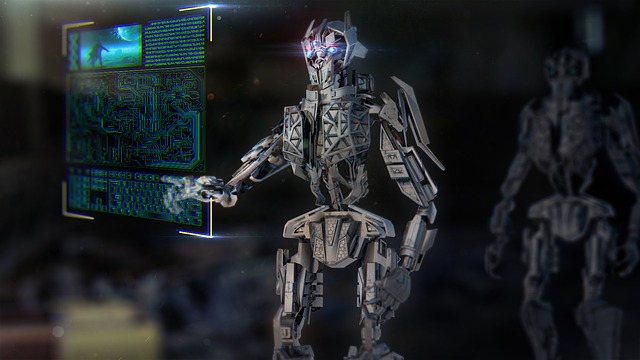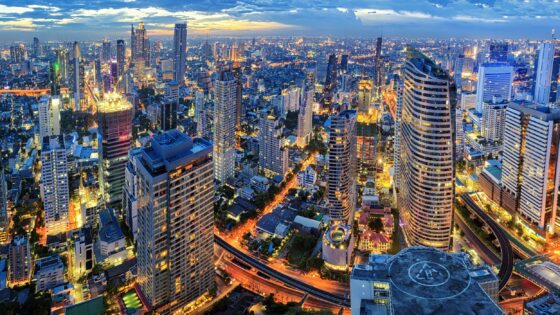With physical distancing and lockdown measures in place across most countries around the world, companies are scrambling to find the means of ensuring business continuity while minimising the amount of contact between their workers.
To achieve this, they are increasingly turning to robots and automation to perform many of the roles that their employees cannot do while working from home.
Global surge amid shifting trends
In its World Robotics Report 2020, the International Federation of Robotics (IFR) reported a 12% YoY (year-on-year) increase in the number of industrial robots operating in factories around the world in 2019. The 2.7 million units in operation worldwide was the highest number ever recorded. Commenting on the findings of the report, Mr. Milton Guerry, the IFR President, stated that: “The remaining months of 2020 will be shaped by adaption to the ‘new normal’. Robot suppliers will be forced to adjust to the demand for new applications and developing solutions.” Taking a closer look at specific regions, Asia remains the strongest market for industrial robots.
In 2019, the annual installations of industrial robots in Asia accounted for about two-thirds of the global supply. China led the ranks, registering almost 140,500 new robots, followed by Japan and the United States with 49,900 and 33,300 units, respectively. South Korea, Taipei, and India are also major Asian markets for robots. The three economies ranked in the top 10 largest markets globally in 2019 with the number of robots installed standing at 27,900 units, 6,400 units, and 4,300 units, respectively.
With the disrupted global supply chain affecting many sectors, demand for automation and robotic systems is uniquely robust. Adoption of the so-called “Cobots,” a term used to describe human-robot collaboration, has surged significantly. The IFR reported that 370,000 cobot units were installed in 2019, representing continued growth of 11%, while accounting for 4.8% of total market share in global industrial robots.
Recent changes in automation and robotics trends have shifted the rankings in terms of the industries with the highest concentration of robots. For many years, the automotive and electronics industries were the leading sectors when it came to sales and adoption of industrial robots. In 2020, however, and particularly since the arrival of the global pandemic, there has been a sharp increase in demand for new robot functions such as in healthcare, especially for the production of personal protective equipment (PPE).

Thailand’s strong industry landscape
Thailand was ranked as the 13th-largest market worldwide for industrial robot installations in 2019 with more than 2,900 units. Apart from the country’s high demand for industrial robots, Thailand also has the potential to play a significant role in the future of automation and robots as it is the 14th-largest exporter of machinery and mechanical appliances, which are critical components in mechanical arm assemblies. The value of Thailand’s machinery and mechanical appliance exports rose to $40 billion in 2019 and recorded 3% annual growth in value between 2015-2019, accounting for a 1.8% share of the global market in 2019. Furthermore, Thailand’s automation and robotics industry attracted over $3.53 million in foreign investment in the first two quarters of 2020, following on from $26.71 million invested in 2019.
In the service robot sector, products made in Thailand have already reached international markets. In 2013, a Thai-made-and-designed elderly care robot called “Dinsow” (meaning pencil) was introduced to the world. It has since become well-known, especially in Japan where the country’s aging population is a major issue. Using the robot’s built-in sensors, camera, speakers, and touchscreen, the care-giving robot is designed to alert the family of the elderly person under its care in the event of an accident or if it detects a difference in facial expression or unusual movement. Currently, more than 50 private and government hospitals in Japan are using Dinsow robots to assist elderly patients. Across more than 10 years of development, CT Asia Robotics, Dinsow’s developer, has launched four versions of Dinsow, with the latest being launched in 2019 and aiming to reach 200 units sold by 2020.
Robust public-private partnership
Through the establishment of the Thai Automation and Robotics Association (TARA), local and international players in the country have access to an extensive network. The association has brought together more than 60 automation and robotics-related companies and academic institutions specialising in automation and robotic systems to help advance Thailand’s technology in the field of robotics. The benefits of TARA’s highly connected network have been reflected in its latest collaboration to invent a new service robot for COVID-infected cases.
Partnering with the Institute of Field Robotics (FIBO) of King Mongkut’s University of Technology Thonburi, the robotic system entitled “FIBO Against COVID-19: FACO” has been launched with technical and financial assistance from various private companies. The highlight of the FACO series is a service robot called “SOFA” which was developed to provide telemedicine services that enable physicians to command the robot remotely using a centralised control system. SOFA is used to minimise direct contact between healthcare practitioners and suspected cases. Prototypes of FACO were handed over to requested hospitals in April 2020. Engineering drawings and system details have been circulated to more than 20 local robot producers to upscale production for mass markets.
Along with such robust partnerships through private-led cooperation, the Thai government has played an active role in fostering robotics development in the country. Since its establishment in 2017, the Center of Robotics Excellence (CoRE) has been the main driver of Thailand’s robotics and automation industry. The centre aims to develop at least 150 robot prototypes, aid more than 200 entrepreneurs, and train more than 25,000 personnel by 2022.

BOI promotes demand and supply
In line with the government’s commitment to supporting the automation and robotics sector, the BOI offers generous incentives to foreign and local investors. An 8-year Corporate Income Tax (CIT) exemption with no designated maximum exemptible amount is granted for business activities in the manufacturing of automation machinery and/or automation equipment with engineering design, including automation system integration (SI) and control system configuration. An 8-year CIT holiday capped at the value of capital investment is also offered to such activities without SI. Businesses engaged in assembling robots or automation equipment are eligible for a 5-year CIT exemption.
To promote the usage of automation and robotics systems among local businesses, the BOI grants a three-year corporate income tax exemption with the tax exemption ceiling not exceeding 50% of the total investment capital. The tax exemption increases to 100% of total investment capital in automation and robotics if businesses use local systems or services.
From January 2018 until June 2020, the BOI approved incentives to promote 54 automation and robotics projects with a combined investment value of $180 million. Of the total investment, 45%, or $80 million, was in local automation and robotics systems.
Besides the aforementioned, non-tax incentives are also offered to ensure smooth business operations, including exemption of import duty on machinery and raw materials, 100% foreign ownership, permission to own land, and permission to bring in skilled workers and experts to work in Thailand.
Source: Bangkok Post




Leave a Reply